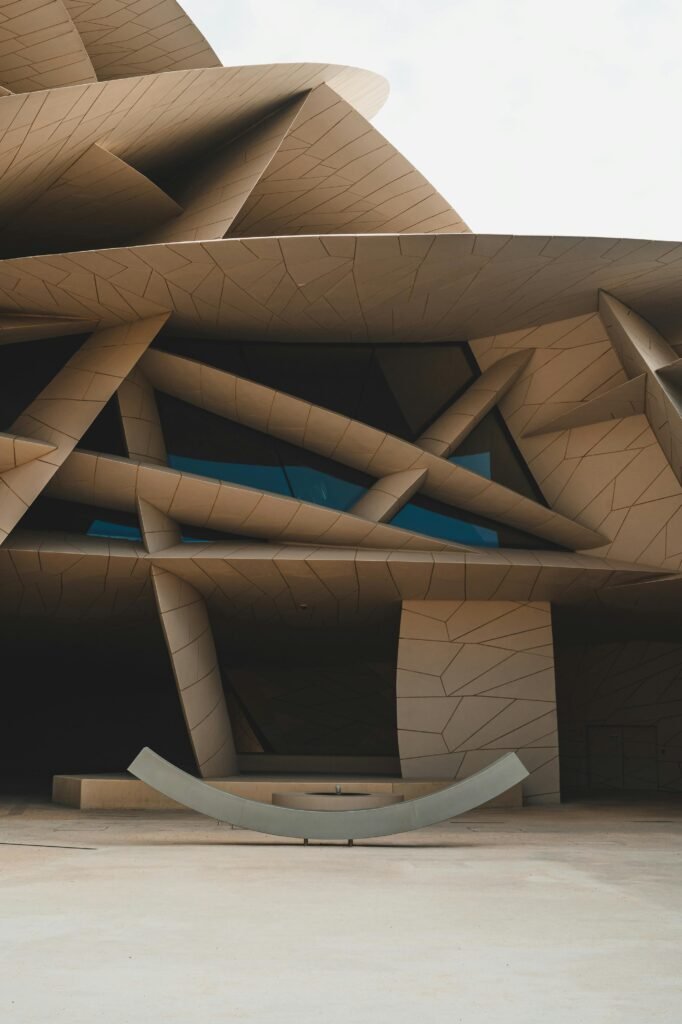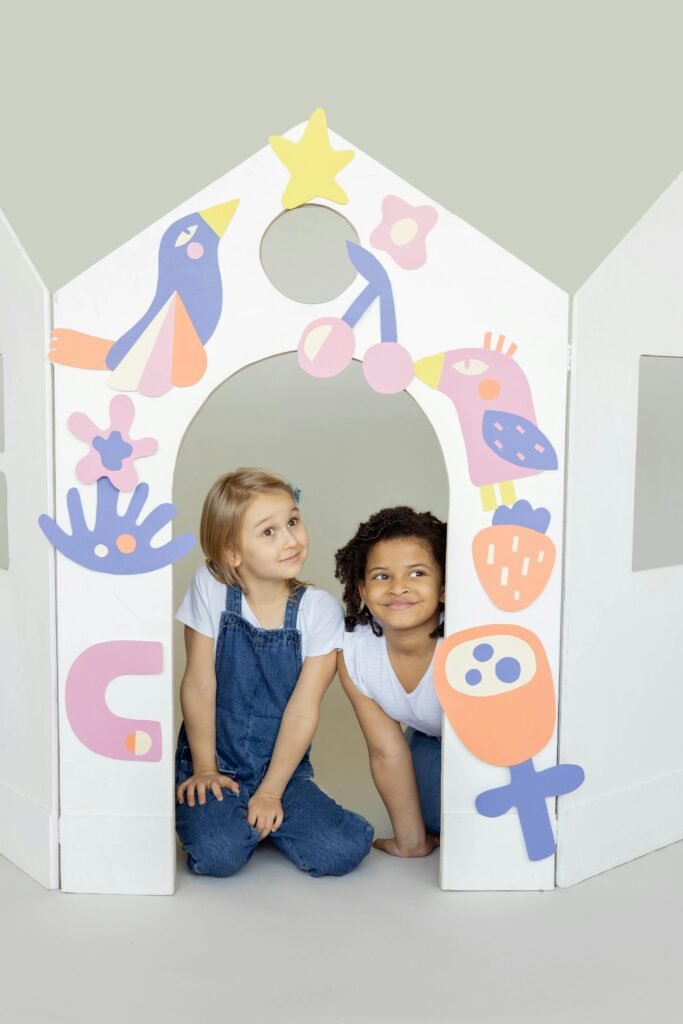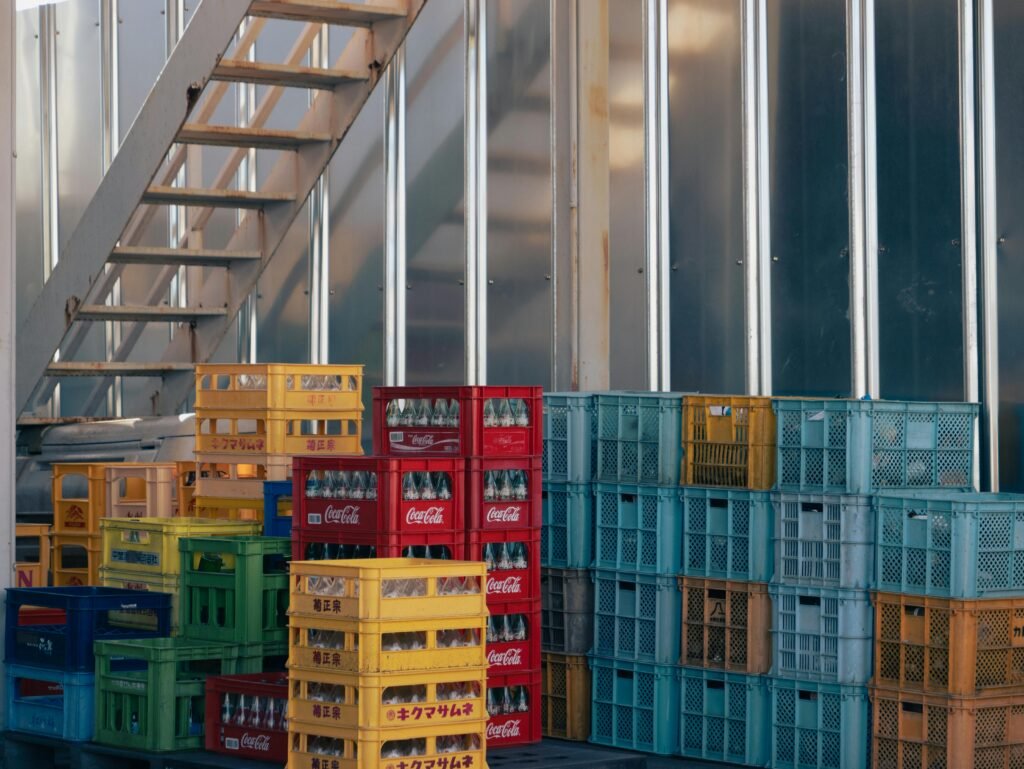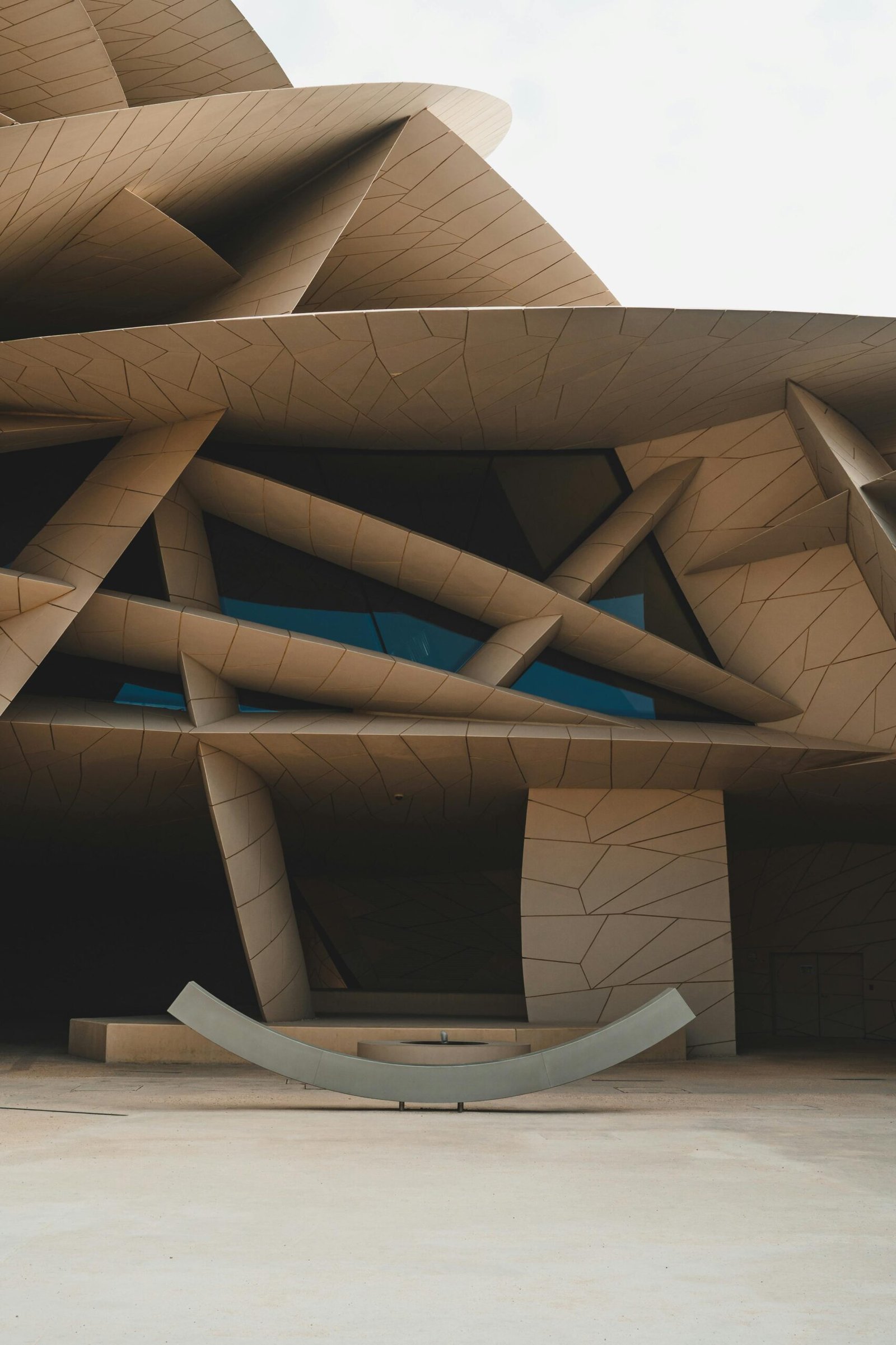Revolutionizing Crate Design with Innovative Features is an article that explores the cutting-edge advancements in creating modern crates. Prepare to be amazed as you discover the ingenious design features that are reshaping the way we use and experience crates. From enhanced durability to unmatched versatility, these innovative features promise to revolutionize the world of crate design. Are you ready to witness the future of this essential storage solution? Let’s dive in and uncover the extraordinary possibilities that await!
Ergonomic Design
Human-centered design principles
In today’s fast-paced and demanding world, it is crucial to prioritize the well-being and comfort of individuals. This principle holds true even when it comes to crate design. The use of human-centered design principles ensures that crates are not just functional but also ergonomic. By considering the needs and limitations of the user, these crates are designed to maximize efficiency and minimize strain on the body.
Improved handling and transporting
Gone are the days when heavy and bulky crates were the norm. Thanks to innovative design features, modern crates are now lightweight and easy to handle. Whether you are moving goods within a warehouse or transporting them across long distances, these crates greatly improve the ease and convenience of handling. The ergonomic handles and compact size allow for a secure grip, reducing the risk of accidents or injuries.
Reduced risk of injuries
One of the key benefits of ergonomic crate design is the reduced risk of injuries. By incorporating features such as rounded corners, cushioned surfaces, and non-slip bottoms, these crates prioritize safety. Whether you are a warehouse worker or a delivery personnel, the risk of cuts, bruises, or strains is significantly minimized. This not only promotes a healthier work environment but also contributes to a happier and more productive workforce.
Enhanced user experience
With ergonomic crate design, the user experience is greatly enhanced. No longer do you have to struggle with heavy crates or worry about injuring yourself while handling them. These crates are designed to make your job easier and more efficient. The thoughtful placement of handles, the optimal weight distribution, and the ease of assembly and disassembly all contribute to a smooth and enjoyable user experience. Say goodbye to the days of struggling with traditional crates and embrace the ergonomic design revolution.
Lightweight Materials
Usage of advanced lightweight materials
The use of advanced lightweight materials is a game-changer in the world of crate design. Traditional crates made of heavy wood or metal have now been replaced with crates made from materials such as high-density plastics, composite fibers, or lightweight alloys. These materials not only provide the necessary strength and durability but also significantly reduce the overall weight of the crates.
Increased portability and mobility
Thanks to the lightweight materials used in modern crate design, portability and mobility have reached new heights. Whether you need to transport goods from one part of a warehouse to another or ship them across the globe, these lightweight crates make the process a breeze. They are easy to lift, carry, and maneuver, providing you with increased efficiency and flexibility in your operations.
Reduced shipping costs
Another significant advantage of using lightweight materials in crate design is the reduction in shipping costs. Traditional heavy crates not only take up more space but also add to the total weight of the shipped goods, leading to higher shipping fees. With lightweight crates, you can optimize your shipping space and significantly reduce the overall weight, resulting in substantial cost savings.
Environmentally friendly
The use of lightweight materials in crate design also has a positive impact on the environment. By minimizing the use of heavy materials, the carbon footprint associated with manufacturing and transportation is significantly reduced. Additionally, many of these modern materials are recyclable or biodegradable, further contributing to a greener and more sustainable future. By choosing lightweight crates, you are not just benefiting your business but also the planet.
Modular Construction

This image is property of images.pexels.com.
Customizable to suit various needs
One of the key advantages of modular construction in crate design is the ability to customize the crates to suit various needs. Whether you are storing small parts, transporting fragile items, or organizing bulk goods, modular crates can be easily adapted to accommodate different products. The flexibility offered by these crates allows you to optimize space and ensure efficient use of available resources.
Easy assembly and disassembly
Gone are the days of spending valuable time and effort on assembling and disassembling crates. With modular construction, the process becomes quick and hassle-free. The use of interlocking components or snap-on mechanisms enables easy assembly without the need for additional tools or expertise. Similarly, disassembling the crates for storage or transportation becomes a breeze, saving you time and energy that can be utilized for other productive tasks.
Adaptable for different product sizes
In a dynamic business environment, it is common to deal with products of varying sizes. The beauty of modular crate design lies in its adaptability. With adjustable dividers or interchangeable components, you can easily create compartments or sections within the crate to accommodate products of different sizes. This ensures maximum space utilization and eliminates the need for multiple specialized crates, saving both storage space and costs.
Space-saving storage when not in use
Another significant advantage of modular crate design is the space-saving storage option it offers. Traditional crates are bulky and often take up a significant amount of space when not in use. However, with modular construction, these crates can be disassembled and stacked flat, thereby freeing up valuable storage space. This feature is especially beneficial for businesses with limited warehouse or storage facilities, allowing for better organization and increased efficiency.
Smart Locking Mechanisms
Secure and tamper-proof storage
When it comes to storing valuable goods, security is of utmost importance. Smart locking mechanisms integrated into modern crates provide an added layer of security and ensure tamper-proof storage. These mechanisms can range from RFID locks to biometric systems, depending on the level of security required. By utilizing these smart locking mechanisms, you can have peace of mind knowing that your products are safely stored and protected from unauthorized access.
Enhanced protection during transportation
Transporting goods can be a risky business, with the potential for theft or damage. Smart locking mechanisms in crates play a crucial role in ensuring the safe transportation of your products. With features such as GPS tracking, remote access control, or real-time alerts, you can closely monitor your crates throughout the journey. This not only increases the chances of recovering stolen goods but also acts as a deterrent against theft.
Integration with digital tracking systems
The integration of smart locking mechanisms with digital tracking systems is a game-changer in the world of crate design. By connecting crates to a centralized monitoring system, you can have real-time visibility of your inventory. This allows for efficient tracking and management of goods, reducing the chances of loss or misplacement. Additionally, the integration enables seamless integration with existing supply chain management systems, further streamlining your operations.
Convenient access for authorized personnel
Gone are the days of fumbling with keys or combinations to access your storage crates. Smart locking mechanisms provide convenient access to authorized personnel through the use of technology such as key cards, PIN codes, or biometric scanners. This not only eliminates the hassle of keeping track of physical keys but also enhances security by restricting access to authorized individuals. The ease and convenience of these access methods greatly contribute to a smoother and more efficient workflow.
Integrated Tracking Technology

This image is property of images.pexels.com.
Real-time location monitoring
In today’s fast-paced business environment, real-time visibility of goods and assets is crucial. With integrated tracking technology, you can monitor the location of your crates at any given time. GPS or RFID-based tracking systems provide accurate and up-to-date information, allowing you to track shipments, anticipate delays, and maintain constant communication with your logistics team. This level of visibility greatly improves supply chain management and customer satisfaction.
Improved supply chain visibility
Integrated tracking technology not only provides real-time location monitoring but also improves overall supply chain visibility. By having a centralized system to track and manage your crates, you can easily identify bottlenecks, inefficiencies, or delays in your supply chain. This allows for proactive decision-making, quick problem-solving, and better coordination between different stakeholders. The insights gained from the tracking data enable you to optimize your operations and deliver products to customers more efficiently.
Efficient inventory management
Integrated tracking technology revolutionizes inventory management. By automatically updating the location and status of crates, you can accurately track stock levels, forecast demand, and plan for replenishments. This eliminates the guesswork and manual labor associated with traditional inventory management processes. The real-time inventory data helps in reducing stockouts, optimizing storage space, and ensuring timely order fulfillment. Improved inventory management translates into cost savings and increased customer satisfaction.
Reduction in loss and theft
The integration of tracking technology significantly reduces the chances of loss or theft. By closely monitoring the location and movement of your crates, you can quickly identify any anomalies or unauthorized access. This allows for prompt action, such as notifying law enforcement authorities or implementing security measures to prevent further losses. The deterrence factor provided by tracking technology acts as a strong deterrent against theft, ultimately protecting your products and your business.
Ventilation Systems
Optimal airflow for perishable goods
When it comes to storing or transporting perishable goods, maintaining optimal airflow is crucial. Traditional crates often lack proper ventilation, resulting in the buildup of moisture, condensation, or unpleasant odors. Modern crates, however, are designed with ventilation systems that promote adequate airflow. These systems allow for the exchange of air, preventing the buildup of moisture and ensuring the freshness and quality of perishable goods.
Preservation of product quality and freshness
Proper ventilation plays a vital role in preserving the quality and freshness of products. By promoting the circulation of air, modern crates prevent the growth of bacteria or mold that can lead to spoilage. Whether it’s fruits, vegetables, dairy products, or pharmaceuticals, the ventilation systems in these crates ensure that the products maintain their integrity and meet the highest quality standards. This ultimately translates into satisfied customers and reduced product wastage.
Prevention of moisture and condensation
Condensation and excessive moisture can wreak havoc on products, particularly those that are sensitive to moisture. Modern crates are equipped with ventilation systems that effectively prevent the buildup of moisture. By allowing the escape of excess moisture, these crates minimize the risk of damage and ensure that your products arrive in optimal condition. Whether you are dealing with electronics, textiles, or food items, the ventilation systems in these crates offer reliable protection against moisture-related issues.
Temperature regulation in extreme conditions
Extreme temperatures can have a detrimental effect on numerous products, ranging from electronics to pharmaceuticals. However, modern crates address this issue through the integration of ventilation systems that help regulate temperatures. By allowing airflow, these crates can dissipate excess heat or maintain a controlled temperature within the crate. This is especially crucial during transportation or storage in hot or cold climates, ensuring that your products are not subjected to extreme temperature conditions that could compromise their quality.
Shock-Resistant Features

This image is property of images.pexels.com.
Impact-absorbing materials and design
The transportation of delicate or fragile items can be a risky endeavor. However, modern crates are equipped with shock-resistant features that reduce the risk of product damage. Impact-absorbing materials, such as foam inserts or cushioning layers, are incorporated into the design of these crates. They act as a protective barrier, absorbing shock and minimizing the transfer of impact to the stored items. This greatly reduces the chances of breakages or damages during transit.
Protection of delicate or fragile items
Whether you are shipping glassware, electronic equipment, or delicate instruments, the protection of delicate or fragile items is paramount. By utilizing shock-resistant features, modern crates provide a secure and cushioned environment for these items. The impact-absorbing materials and design ensure that the stored products are well-protected from vibrations, rough handling, or accidental drops. This gives you peace of mind knowing that your fragile items will arrive intact at their destination.
Reduced product damage during transit
Traditional crates often fall short when it comes to minimizing product damage during transit. However, with the incorporation of shock-resistant features, modern crates greatly reduce the risk of product damage. By absorbing impact and preventing shifting or movement of items within the crate, these crates ensure that your products are well-protected throughout the journey. This not only saves you the hassle of dealing with return rates and customer complaints but also improves your reputation as a reliable and trustworthy business.
Minimized return rates and customer complaints
One of the major challenges faced by businesses is the high return rates and customer complaints due to product damage during transit. However, the incorporation of shock-resistant features in crate design directly addresses this issue. By significantly reducing product damage, these crates minimize return rates and customer complaints, thereby improving customer satisfaction and loyalty. The investment in shock-resistant crates pays off in terms of a happier customer base and a more efficient and profitable business.
Multi-functional Compartments
Efficient space utilization
Efficient space utilization is a key factor in warehouse management or transport logistics. Traditional crates often lack the ability to make the most of available space. However, modern crates with multi-functional compartments offer a solution to this problem. These compartments effectively utilize the available space, allowing you to maximize storage capacity and reduce wasted space. By optimizing storage, you can increase efficiency, reduce costs, and improve overall productivity.
Separation and organization of goods
The ability to separate and organize goods within a crate is crucial for businesses dealing with multiple products or components. Modern crates with multi-functional compartments provide the perfect solution. These compartments allow you to segregate different items, ensuring easy access and identification. Whether you are storing electronic components, spare parts, or personal belongings, the ability to separate and organize goods simplifies inventory management and improves overall efficiency.
Customizable compartments for different products
Every business has unique storage or transport requirements. Modern crates with multi-functional compartments offer the flexibility to customize compartments according to your specific needs. With adjustable dividers or removable inserts, you can create compartments that perfectly accommodate different product sizes, shapes, or quantities. This eliminates the need for multiple specialized crates and simplifies the storage or transportation of diverse products.
Streamlined packing and unpacking process
The packing and unpacking process can be a time-consuming and labor-intensive task. However, modern crates with multi-functional compartments streamline this process. By providing designated spaces for different items or components, these crates allow for a more efficient packing and unpacking process. The compartments ensure that items are easily accessible and well-organized, reducing the chances of misplacement or damage. This translates into time savings and improved productivity.
Environmental Sustainability
Use of eco-friendly materials and manufacturing processes
In an era where environmental concerns are paramount, the use of eco-friendly materials and manufacturing processes in crate design is crucial. Modern crates are designed with sustainability in mind, utilizing materials that are recyclable, renewable, or sourced from sustainable suppliers. Additionally, manufacturers are adopting eco-friendly production methods, such as reducing water usage or implementing energy-efficient practices. By choosing crates that prioritize the environment, you are making a positive contribution to sustainable business practices.
Recyclable and biodegradable crate options
To further enhance their environmental sustainability, modern crates offer recyclable and biodegradable options. These crates are designed to be easily dismantled and recycled at the end of their lifespan. They can be repurposed into new products or materials, minimizing waste and reducing the demand for virgin resources. Additionally, some crates are made from biodegradable materials that break down naturally over time, further reducing their environmental impact.
Reduction of carbon footprint
The use of eco-friendly materials, coupled with energy-efficient manufacturing processes, contributes to the reduction of the carbon footprint associated with crate design. Traditional crates made from non-renewable resources or manufactured using energy-intensive processes have a significant carbon footprint. However, modern crates that prioritize sustainability help in mitigating climate change by minimizing greenhouse gas emissions. By opting for crates with a lower carbon footprint, you are aligning your business with environmental responsibility.
Positive brand image among environmentally conscious consumers
In today’s environmentally conscious marketplace, consumers are increasingly drawn to businesses that prioritize sustainability. Choosing environmentally friendly crates enhances your brand image and gives you a competitive edge. By demonstrating your commitment to protecting the planet, you build trust with environmentally conscious consumers and attract a larger customer base. Moreover, consumers are more likely to support brands that align with their sustainability values, ensuring long-term success and growth for your business.
Improved Durability
Long-lasting materials and construction
Durability is a crucial aspect of crate design, especially for businesses dealing with frequent handling or transportation of goods. Modern crates are built to last, utilizing long-lasting materials and robust construction. The incorporation of high-density plastics, reinforced composites, or durable alloys ensures that these crates can withstand the rigors of daily use. The long-lasting nature of these crates translates into cost savings and reduces the need for frequent replacements.
Resistance to wear, tear, and weather conditions
Traditional crates often succumb to wear, tear, or damage caused by external factors such as weather conditions or rough handling. However, modern crates are designed to be highly resistant to these challenges. Whether it’s extreme temperatures, moisture, or rough treatment, these crates can withstand the test of time. The ability to resist wear, tear, and weather conditions ensures that your products remain protected and unaffected throughout their journey.
Cost savings through prolonged crate lifespan
Investing in crates with improved durability directly contributes to cost savings for your business. Traditional crates that easily break or degrade require frequent replacements, resulting in additional expenses. However, modern crates with enhanced durability offer a prolonged lifespan, reducing the need for frequent replacements. The cost savings associated with prolonged crate lifespan can be significant, ultimately boosting your bottom line and improving the profitability of your operations.
Enhanced product protection throughout its lifecycle
The primary purpose of crates is to protect and safeguard the products within them. Modern crates with improved durability excel in this aspect. By offering enhanced protection throughout the lifecycle of your products, these crates minimize the risk of damage or loss. Whether it’s during storage, transportation, or handling, you can have peace of mind knowing that your products are well-protected. The robust construction and durable materials ensure that your products reach their destination in optimal condition, guaranteeing customer satisfaction and loyalty.
